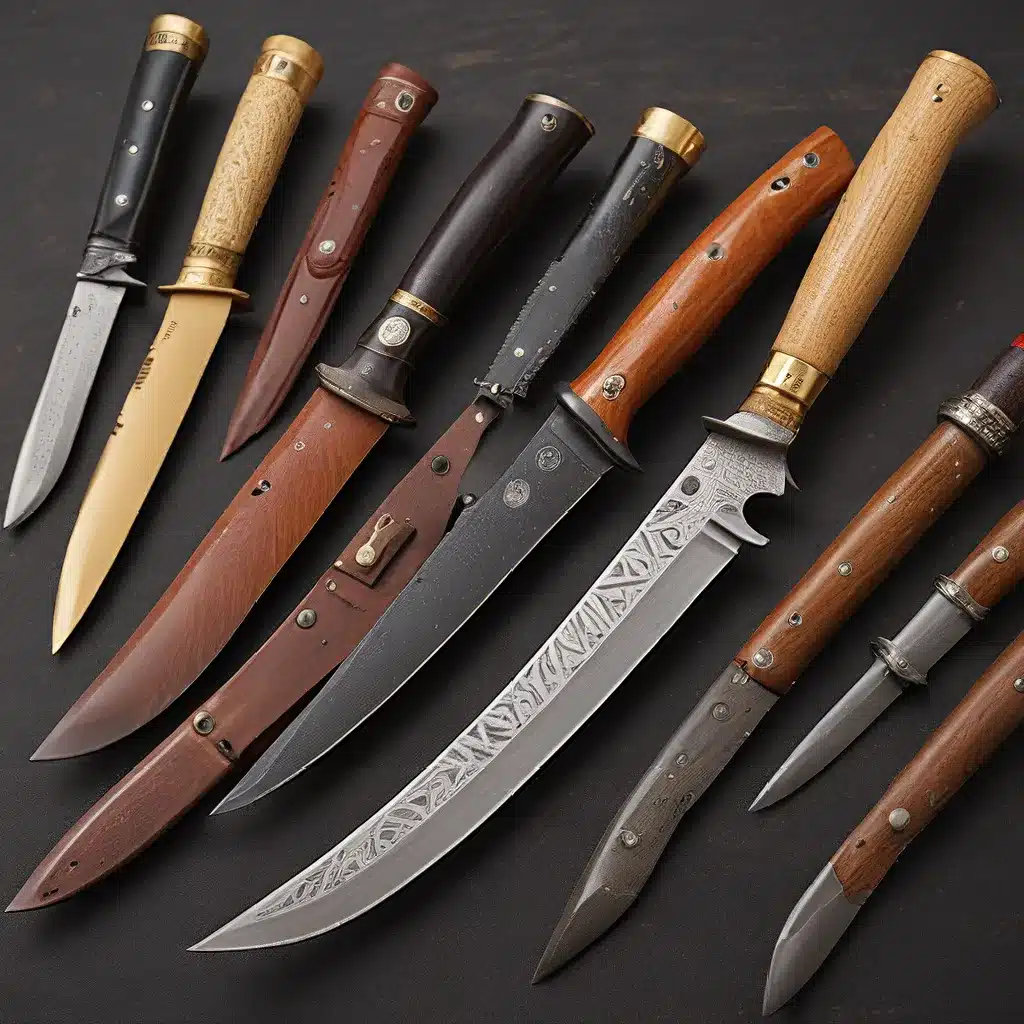
As a self-proclaimed knife enthusiast, I’ve been down the rabbit hole of researching the intricacies of collectible knives. Let me tell you, it’s a world filled with equal parts fascination and frustration. On one hand, I’m captivated by the intricate craftsmanship, the rich history, and the sheer artistry that goes into creating these sought-after blades. But on the other hand, navigating the legal landscape surrounding knife ownership and transport can be downright mind-boggling.
The Allure of Collectible Knives
I remember the first time I laid eyes on a custom-made Damascus steel knife. The mesmerizing patterns, the heft in my hand, and the promise of unparalleled performance – it was love at first sight. From that moment on, I was hooked. I spent countless hours scouring online forums, attending knife shows, and striking up conversations with seasoned collectors, all in pursuit of expanding my own collection.
One of the most fascinating aspects of the collectible knife world is the sheer diversity of designs and materials. Whether it’s a classic bespoke blade crafted by a master bladesmith or a meticulously restored antique, each knife tells a story. Some enthusiasts even go the extra mile, incorporating exotic handle materials like mother-of-pearl or turquoise to create truly one-of-a-kind pieces.
The Perilous Path of Knife Ownership
But as I delved deeper into this world, I quickly realized that owning and transporting collectible knives is no simple feat. Knife laws, you see, can be as complex and varied as the blades themselves. What’s perfectly legal in one state might be a huge no-no just a few miles down the road.
I remember the time I accidentally packed my prized hunting knife in my carry-on luggage while traveling. Imagine my horror when the TSA agent pulled it out and gave me a stern lecture on airport security regulations. Needless to say, that knife spent the rest of the trip in my checked bag, and I learned a valuable lesson about the importance of understanding local laws.
Navigating the Legal Landscape
One of the biggest challenges in the world of collectible knives is staying on the right side of the law. Regulations can vary wildly depending on your location, and what’s considered a perfectly acceptable blade in one jurisdiction might be deemed a dangerous weapon in another.
For example, some states have strict laws on the length of blades, while others focus more on the type of knife, such as banning automatic or gravity-assisted knives. And don’t even get me started on the complexities of importing collectible knives from other countries – the maze of customs regulations is enough to make your head spin.
Staying Informed and Staying Safe
As a passionate knife collector, I’ve learned that staying informed and playing by the rules is crucial. Before making any major purchases or planning a trip with my prized blades, I always make sure to thoroughly research the relevant laws and regulations. After all, the last thing I want is to end up in legal trouble over a simple misunderstanding.
One of the best resources I’ve found is the Artisan Cutlery website, which has a wealth of information on knife knowledge and legal considerations. They even offer guidance on the proper way to transport and store collectible knives, which has been a lifesaver more than once.
The Thrill of the Hunt
Despite the legal hurdles, the thrill of hunting for that elusive, one-of-a-kind blade never seems to fade. There’s something almost primal about the experience – scouring antique shops, attending knife shows, and networking with fellow collectors in search of that perfect addition to my collection.
And let me tell you, the sense of accomplishment when I finally track down a rare or historically significant knife is unparalleled. It’s like unlocking a piece of history, a tangible link to the skilled craftsmen and adventurous souls who came before me.
A Passion Worth Pursuing
Sure, navigating the world of collectible knives can be a bit of a minefield, but for me, the rewards far outweigh the challenges. There’s just something about the intersection of form, function, and history that keeps me coming back for more.
So, to my fellow knife enthusiasts out there, my advice is simple: do your research, stay informed, and never let the legal hurdles dampen your passion. After all, a life without the thrill of the hunt and the pride of a well-curated collection is no life at all.


